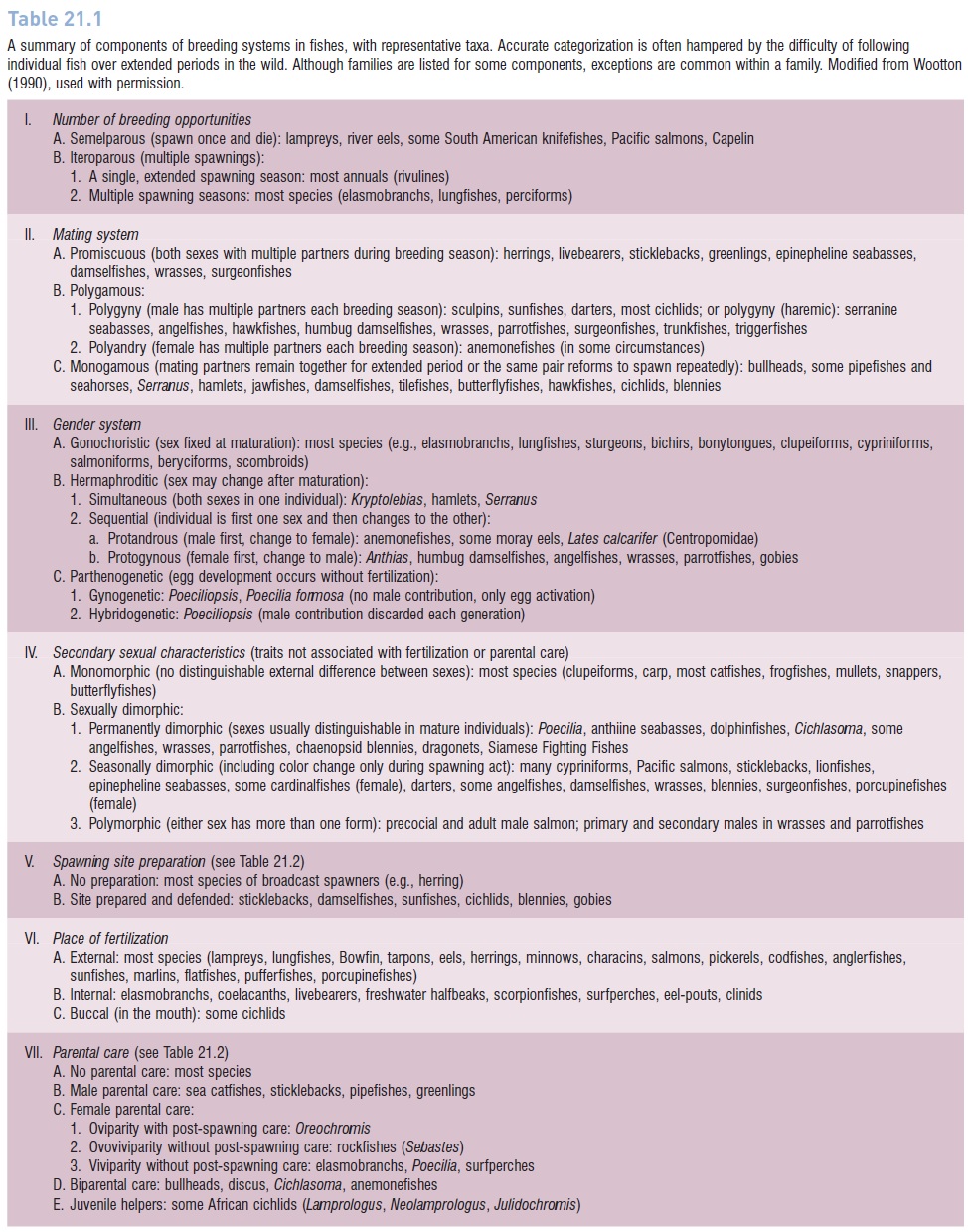Chapter: The Diversity of Fishes: Biology, Evolution, and Ecology: Fishes as social animals: reproduction
Lifetime reproductive opportunities - Reproductive patterns among fishes
Lifetime reproductive opportunities
Most fishes are iteroparous, spawning more than once during their lives (e.g., sharks, lungfishes, sturgeons, gars, tarpons, minnows, trouts, codfishes, seabasses). However, some well-known species are semelparous, spawning one time and dying. Semelparity characterizes most salmon of the genus Oncorhynchus (e.g., Pink, Chum, Chinook, Coho, and Sockeye salmon). These fishes hatch in fresh water, migrate to the sea for a period of 1–4 years, and then return to their natal (birth) stream where they spawn and die. Although the life cycle of females appears to be relatively fixed across a species, intrapopulational
Table 21.1
A summary of components of breeding systems in fishes, with representative taxa. Accurate categorization is often hampered by the difficulty of following individual fish over extended periods in the wild. Although families are listed for some components, exceptions are common within a family. Modified from Wootton (1990), used with permission.

Other semelparous fishes include lampreys, anguillid (freshwater) eels, and the osmeriform southern smelts (Retropinnidae) and galaxiids of Australia and New Zealand (McDowall 1987). American Shad (Alosa sapidissima) are semelparous in southern locations (30–33°N), largely iteroparous at northern latitudes (41–47°N), and variably iteroparous at intermediate latitudes (Leggett & Carscadden 1978). With the exception of such annual fishes as aplocheiloid rivulines, semelparous fishes are diadromous or include at least one major migratory phase in their life cycle. Anguillid eels show sex-based differences in tactics within an overall semelparous strategy. Males often mature rapidly (c. 3–6 years) and at a uniformly small size (30– 45 cm) regardless of locale, whereas females are consistently longer (35–100 cm) and may mature quickly (4–13 years) at low latitudes or slowly (6–43 years) at high latitudes. Slow maturing females grow larger and produce more eggs than smaller, faster maturing females. In American eels, males have a relatively restricted geographic distribution, occurring primarily in estuaries of the southeastern United States, whereas females are found throughout the North American range of the species and in all habitats. As far as is known, all members of an anguillid species migrate to the same oceanic region to spawn and die (Sargasso Sea in the western Atlantic for American and European eels, the Philippine Sea for Japanese eels) (Helfman et al. 1987; Jessop 1987; Representative life histories of migratory fishes).
Related Topics